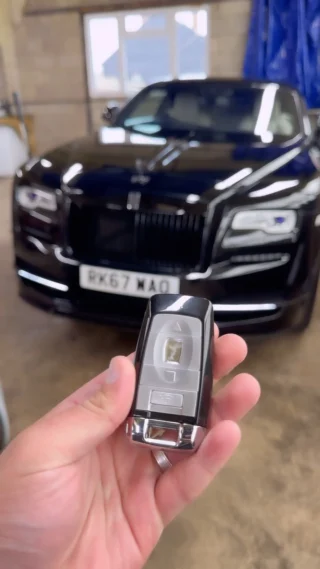Broken Key Repair: Solutions for Common Lock Issues
Intro
Keys are necessary tools in our every day lives, enabling us to secure our homes, vehicles, and personal belongings. Nevertheless, linked web page can likewise break, causing disappointments and hassles. Comprehending how to attend to broken key problems is vital for anyone desiring to keep their locks and ensure access to their home. This short article covers various elements of broken key repair, consisting of typical causes, repair approaches, and preventive steps to prevent future circumstances.
Typical Causes of Broken Keys
Keys can break for numerous factors. Comprehending these causes can help in avoiding future occurrences:
- Wear and Tear: Over time, keys can wear down due to frequent usage, resulting in weakened shafts that are most likely to break.
- Poor Key Design: Keys that are poorly developed might do not have structural integrity, making them more susceptible to breaking under tension.
- Inaccurate Key Usage: Using excessive force to turn a key, particularly in a jammed lock, can quickly lead to a breakage.
- Environmental Factors: Extreme temperatures or direct exposure to moisture can damage metal keys, leading to brittleness.
- Lock Malfunctions: A malfunctioning lock can put undue tension on a key, triggering it to snap throughout operation.
Indications of a Broken Key
Identifying a broken key typically comes with apparent indications. Here are some indications:
- Partial insertion into the lock: If the key can not be totally placed or removed.
- Unexpected resistance: If the key feels stuck when being turned.
- Noticeable divides or fractures: Inspecting the key can expose fractures or breaks in the metal.
- Insufficient engagement: The key may turn less than required to activate the lock.
Approaches for Broken Key Repair
When faced with a broken key, there are several methods to consider for repair. It is important to pick the ideal one based on your specific circumstance.
1. Remove the Broken Key
If a key breaks within a lock, the very first action is to get rid of the broken part:
- Use tweezers or needle-nose pliers: If a piece is standing out of the lock, carefully pull it out.
- Place a key extractor tool: This customized tool can assist extract lodged parts more efficiently.
| Tool | Finest Used For |
|---|---|
| Tweezers | Shallow extraction |
| Key extractor tool | Deeply trapped key pieces |
| Lube spray | Relieving extraction of stuck parts |
2. Superglue Method
For situations where a key has actually partially broken but is intact enough to remain gripped, the superglue technique might provide a momentary fix.
- Tidy the broken surface areas completely.
- Use a thin layer of superglue.
- Hold the pieces together for a few minutes up until the glue sets.
Note: This technique is not a long-term service and must be used with caution as the repair can quickly fail under functional stress.
3. Metal Epoxy
For a more robust repair, metal epoxy supplies a more powerful bond than superglue.
- Follow the directions on the epoxy packaging for preparing the adhesive.
- Apply to the broken area and hold till set (normally a couple of hours).
4. Duplicate the Key
In circumstances where lock performance is essential, producing a duplicate key is often the very best route:
- Visit a locksmith: Many locksmiths can replicate keys quickly and effectively.
- Utilize a key-tracing service: Some locksmiths use tracing methods to cut an identical key based on the residues.
5. Lock Replacement
When keys repeatedly break, it might be because of lock problems rather than key stability. In such cases:
- Consult a locksmith to assess the lock's condition.
- Think about replacing the lock entirely if considerable damage or wear appears.
Preventing Key Breakage
Avoiding key breakage is frequently much better than repair. Here are some useful ideas:
- Limit force on keys: Always turn keys gently to prevent unnecessary stress.
- Regular key inspection: Check for wear and change keys revealing signs of damage.
- Use a keychain: Prevent excessive flexing by using a tough keychain.
- Lube locks: Ensure locks run smoothly to minimize pressure on keys.
- Store keys effectively: Avoid putting keys in environments that can cause rust or rust.
FAQs About Broken Key Repair
1. Can I repair a broken key myself?
Yes, you can attempt to repair a broken key yourself utilizing techniques like the superglue or metal epoxy strategies. However, these are short-term repairs, and it is a good idea to speak with a professional locksmith for a more resilient option.
2. Is it worth repairing a broken key?
Sometimes, especially with emotional or distinct keys, a repair might be worth it. For basic keys, duplication or replacement is normally more effective and reliable.
3. How can I avoid my keys from breaking?
To avoid damage, ensure that keys are not subjected to excessive force, frequently check them for wear, and keep locks well-kept.
4. When should I look for a locksmith's help?
If you are not able to eliminate a broken key from a lock or if the lock breakdowns regularly, it's finest to seek a locksmith's know-how.
Broken keys can provide a considerable hassle, but they are manageable with the best approach. By comprehending the common causes and available repair methods, individuals can respond successfully to key damage. Drawing from preventive steps will likewise assist keep key integrity and functionality. Ultimately, a proactive approach to key and lock maintenance can substantially lower the frequency of these frustrating concerns.

